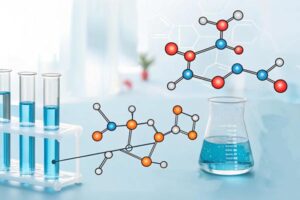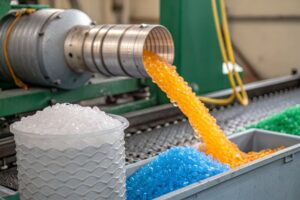High-Temperature High-Pressure Hydrolysis Aging Test is a testing method used to evaluate the durability and performance changes of materials under high-temperature and high-pressure water environments.
In this test, samples are typically prepared in the form of films, coatings, or test pieces. These samples are exposed to high-temperature and high-pressure water environments to simulate extreme conditions of hydrolysis aging. This test is primarily used to study the stability and reliability of materials when exposed to high-temperature and high-pressure water over extended periods.

The specific procedures of the test may vary depending on the application area and research objectives, but typically include the following:
- Sample preparation: Prepare a specified number of samples and ensure they meet the test requirements and dimensional specifications.
- Experimental setup: Place the samples in a high-temperature and high-pressure water environment. The temperature and pressure settings can be adjusted based on specific needs. Common experimental conditions include high temperatures (typically between 100°C and 200°C) and high pressures (ranging from several atmospheres to tens of atmospheres).
- Duration of the test: The samples are exposed to the high-temperature and high-pressure water environment for a specific period, typically ranging from several hours to several days, to simulate long-term exposure in real-world applications.
- Observation and measurement: After the test, remove the samples for observation and measurement. Possible observations include changes in appearance, size, and texture. Additionally, performance tests such as tensile strength, hardness, and wear resistance can be conducted.
- Data analysis: Evaluate and compare the performance changes of the samples based on observations and test results. Statistical analysis methods can be used to analyze the data and determine the high-temperature and high-pressure hydrolysis aging performance of the materials.
The High-Temperature High-Pressure Hydrolysis Aging Test aims to assess the performance stability and durability of materials under extreme conditions. It provides guidance for material selection, product design, and engineering applications.
Applications of the High-Temperature High-Pressure Hydrolysis Aging Test include:
- Automotive industry: Assessing the performance and durability of materials used in engine components, transmission systems, electrical connectors, and sensors that are exposed to high-temperature and high-pressure environments.
- Oil and gas industry: Evaluating the performance of materials used in downhole equipment, pipelines, and valves subjected to high-temperature and high-pressure conditions in oil and gas exploration and production.
- Aerospace industry: Assessing the durability and reliability of materials used in aircraft engines, hydraulic systems, and structural components exposed to extreme temperature and pressure conditions.
- Chemical processing: Evaluating the performance of materials in chemical reactors, heat exchangers, and other equipment exposed to high-temperature and high-pressure water environments.
The High-Temperature High-Pressure Hydrolysis Aging Test provides valuable insights into the long-term performance and durability of materials under extreme conditions, helping researchers and engineers make informed decisions in various industries.
How to improve the testing result of Hydrolysis Aging Test?
Usually an anti-hydrolysis agent is used to improve the testing results of hydrolysis aging test. The anti-hydrolysis agents inhibit or slow down the hydrolysis reactions that lead to material breakdown. These agents reduce the interaction between water molecules and the material’s chemical bonds, preventing or minimizing structural deterioration. As a result, the material exhibits improved durability and extended lifespan when exposed to water or humid environments.







